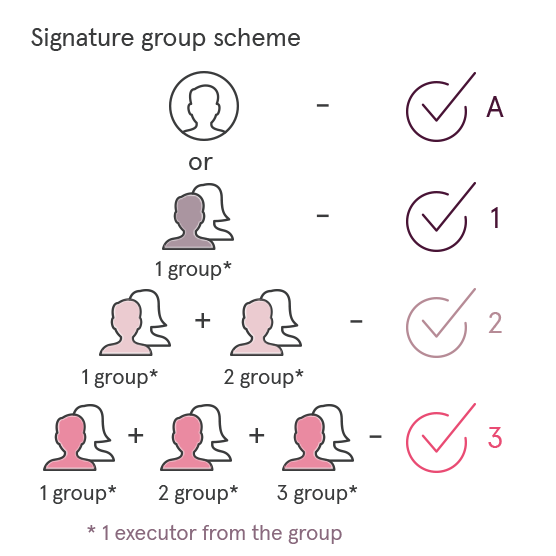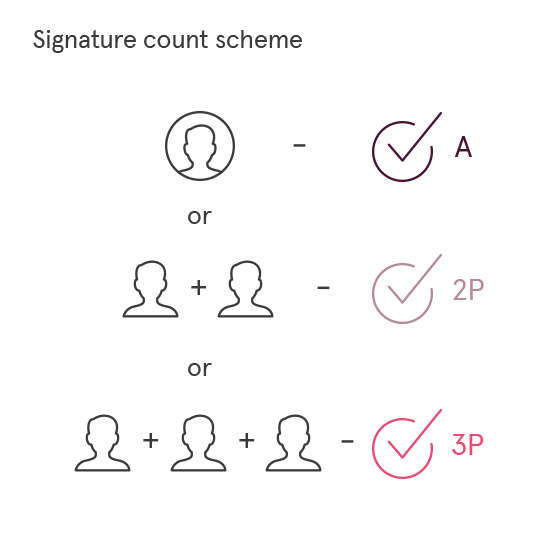Signature schemes | Luminor
Signature schemes
The signature scheme is attributed to the client’s account. The signatures at the account indicate how many signatures the system requires in order to make payments from this account. The purpose of both signature schemes is the same, yet the principle differs.
There are two types of signature schemes:
The signature group scheme

- If the signature belongs to the executor who has the right of type “A” signature, the payment order is immediately referred for execution;
- Group one (1) – one executor’s signature is sufficient, if the executor has the right of the 1st (first) signature;
- Group two (2) – at least 2 executors must sign: one executor with the right of the 1st (first) signature and one executor with the right of the 2nd (second) signature (the priority of signatures is irrelevant);
- Group three (3) – payment orders are signed and referred for execution, if there is one executor’s signature from group 1, 2 and 3 each.
The signature quantity scheme

- If the signature belongs to the executor who has the right of type “A” signature, the payment order is immediately referred for execution.
- “2P” – two signatures. Payment orders are signed and referred for execution upon presence of two signatures: one signature is type “2P” and the second signature is type “A” or “2P”.
- “3P” – three signatures. Payment orders are signed and referred for execution upon presence of three signatures: one signature is type “3P”, the other two signatures are type “2P” or “3P” or one type “A” signature, or upon presence of two signatures: one signature is type “3P” and the other signature is type “A”.
